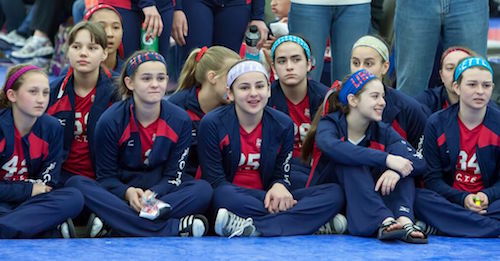By JVA Club Director Evan Berg
The club season is just around the corner. As we prepare for tryouts, we place a high value on making the right decisions for our teams, ultimately trying to be as competitive as possible. For as much value as we place on this, we also place an equal or greater value on preparing those teams for a successful and SAFE season.
We currently live in a society that is very electronically driven. Communication via many forms of electronic media is as high as it’s ever been, almost to the point where players and even adults are relying on this as their main method of communication. Instead of running away from the reality of how today’s society communicates, we want to be able to embrace the technology and give very specific guidelines as to how we want it used within our organization this season.
Our ultimate goal as a club in regards to electronic communication (texting, emailing) is safety and transparency. While we don’t want to completely cut out all forms of electronic communication, we give our players, parents and coaches a set of guidelines to follow while using it.
Cell Phones at Practice and Tournaments
When players enter our practice facility, cell phones need to be put away in their bags and cannot be used until they leave the facility. Similarly, during any tournaments or team functions, cell phones are not allowed to be out or used, unless in an emergency after the player asks the coach for permission. Basically, when a team is together in any sort of team function, whether it is practice, tournaments or team outings, cell phones are not allowed to be used and must stay in the players bags. This policy is primarily encouraged because otherwise players do not communicate with one another, so we find that it helps players engage in real conversation.
Coaches are allowed to have their cell phones at practice and tournaments. Our club has not had an issue with coaches abusing the privilege, so we have not needed to implement a policy. Plus, many times coaches depend on their phone as a stopwatch at practice, or to communicate match results at a tournament, so cell phones are used for more than just casual fun and social media.
Communication Between Coach and Player
Our main goal with communication, especially text messaging, is to be completely transparent and allow a paper trail of all things communicated between coach and player. In the case that an individual player and coach need to communicate via text, we require that the coach also include the other assistant coach, a director and one parent on the text message. The subject matter of the text message, however, is to be communicated only between the player and coach. Whatever topic is being discussed between the coach and player is only meant for the coach and player. The parent, assist coach and director are only copied on the text to ensure transparency and safety. Meaning they shouldn’t intervene in the conversation between the coach and player.
While we need to create guidelines for our organization in regards to electronic communication and social media, we ultimately first and foremost, encourage face-to-face communication. We want all of our coaches to help our players learn and understand the value of in-person communication. This is a life skill that is vital to the success of our younger generation. Having coaches who can help carry out this goal ensures that our players, parents, staff and club are safe, and that our younger athletes are on a path to success.
About the Author
Evan Berg is the Recruiting Coordinator, Beach Director, Lead Coach and 18-1’s coach for Wisconsin Juniors in Pleasant Prairie, WI.













